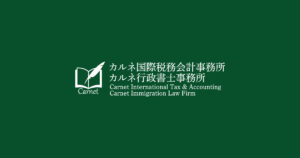Taxation of remittance of non-permanent residents (with multiple incomes)
【Case Study】
X, a U.S. citizen, has been assigned to a Japanese subsidiary from a U.S. parent company for a period of three years starting in 2021. X has never lived in Japan before and is a non-permanent resident.
This year, X had the following income in Japan and the U.S. (in yen)
Income from real estate owned in the U.S. (deposited in the U.S. bank account below) 2,000,000
After calculating real estate income, the amount of X's real estate income for this year is 300,000.
Dividends on unlisted U.S. stocks (credited to the U.S. bank account below) 600,000
Interest on deposits in bank accounts (branches in the U.S.) located in the U.S. 100,000
Salaries (for service in Japan) 12,000,000
600,000 of the salary is transferred to X's account at the above U.S. financial institution.
On the other hand, the credit card that X uses in Japan for daily life is settled from X's U.S. bank account above. The amount of the credit card used in Japan this year is 1,000,000 yen.
In calculating X's income for this year, how will the amount of 1,000,000 yen spent on credit cards be handled? X will file a white tax return.
【Conclusion】
Since X is a non-permanent resident, he is required to file an income tax return in Japan when he receives remittances from abroad, within the total amount of foreign source income paid abroad. Since payment by credit card also constitutes a remittance from abroad, X is required to file an income tax return for the lesser of the amount of the credit card payment minus the amount of salary paid abroad or the total amount of the foreign source income (dividend income, interest income, and real estate income) paid abroad. The amount of income must be reported on the tax return as the amount of various types of income.

